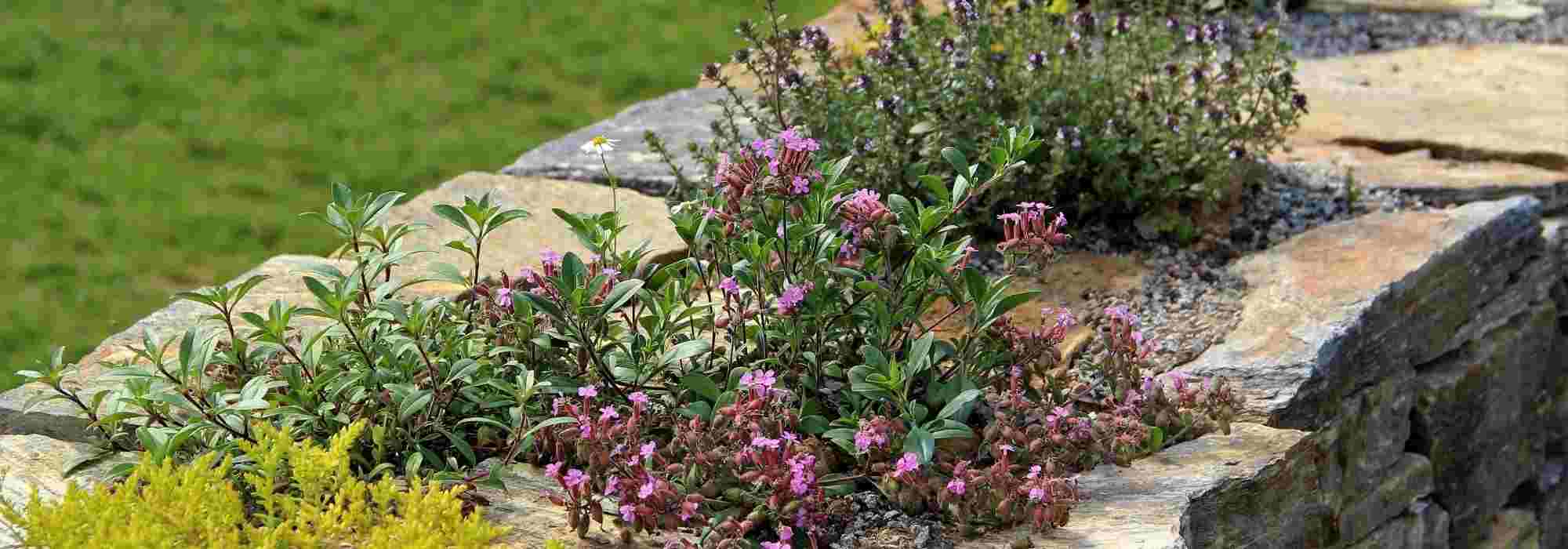
10 perennial plants to enhance a low garden wall
Best species and varieties for full sun and shade!
Contents
Stone walls add extra charm to a garden, especially if time has given them a lovely patina. Some can naturally become covered in moss or host spontaneous plants that are happy to grow in very little substrate, finding among the rocks the nutrients and moisture they need to grow. However, a gardener can give Nature a little helping hand by deliberately introducing plants renowned for their decorative appeal. In this selection, I suggest 10 perennials to plant between stones, 5 of them suited to warm, sunny exposures, 5 others to consider for cooler, shadier walls. An additional selection will help you enrich your composition and create attractive combinations.
Perennials for sunny low walls
Erigeron fleabane (Erigeron karvinskianus)
Erigeron, nicknamed wall daisy, is a charming perennial with record flowering. From April to December depending on region, a multitude of small daisy-like flowers forms an airy cloud. Flowers evolve from purplish pink to white, with a yellow centre. Foliage, evergreen in mild climates, consists of small green leaves that enhance plant’s vapoury effect. Depending on amount of substrate available, Erigeron can form a cushion 20–30 cm high and 40–50 cm wide. Very happy in dry soils and in sunny situations, hardy to −12°C in well-drained soil, this perennial self-seeds freely in every crevice without becoming invasive. It softens stone walls with grace and can grow in just a few centimetres of earth.
- Discover how to plant, to grow and to care for Erigeron fleabane.
- All our Erigeron species and varieties in our online nursery.
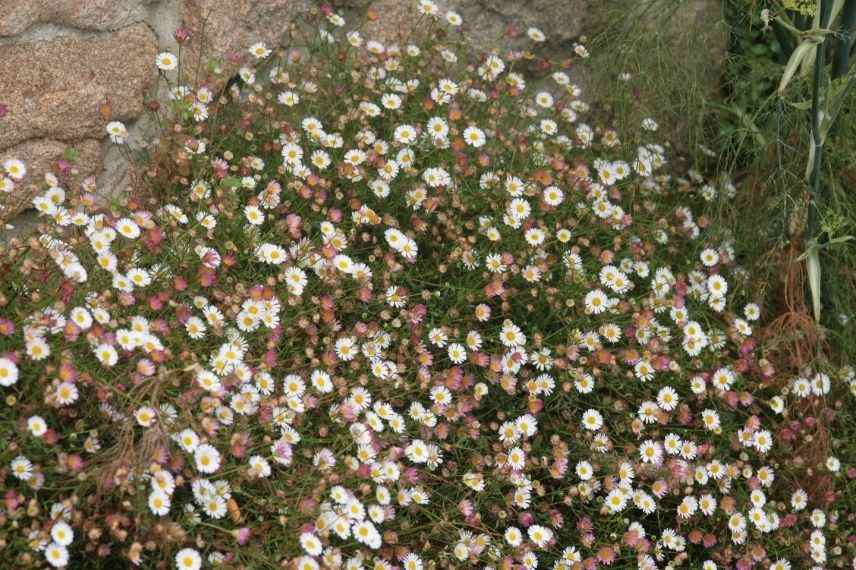
Erigeron karvinskianus
Globularia (Globularia)
Globularia is a very hardy perennial, both drought- and frost-resistant (hardy from −15°C to −30°C depending on species). Its small spherical flowers appear in abundance between April and August. Sky blue in Globularia punctata, lavender to lilac in Globularia cordifolia, while inflorescences of Globularia trichosantha combine two blue tones for a lovely effect. Foliage, arranged in rosettes of flattened, dentate leaves, is green and persists in mild climates. At 15–30 cm high, plant forms a spreading cushion. Globularia dislikes poorly drained soils and is therefore ideal between stones of a wall. Give it a warm, sunny spot in neutral to calcareous soil.
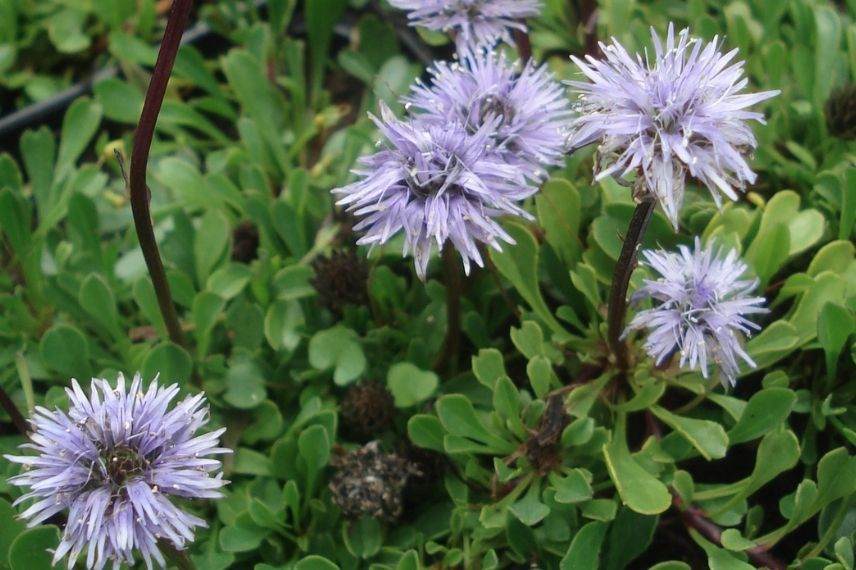
Globularia cordifolia
Aubrieta (Aubrieta)
Aubrieta, a lovely alpine perennial, is a classic choice for flowering walls. Its ease of culture and good hardiness (to −20°C) make it suitable for both experienced gardeners and beginners. Plant forms a cushion wider than tall (15 cm × 50 cm) whose habit seems trailing when planted on a vertical surface. Foliage, ranging from bright green to silver or bluish tones, may also show paler margins, as in Aubrieta ‘Dr Mules Variegated’. Evergreen to semi-evergreen, it remains ornamental throughout year. Although its lifespan is relatively short, it is exceptionally generous at flowering time, in mid-spring. Small melliferous flowers, single or double, then create a true colourful tapestry, in shades of blue, violet, pink, red or even white. Very accommodating, Aubrieta thrives in sun, in any light, well-drained soil, even calcareous, that retains some freshness in season.
- Discover all varieties and colours available in our Aubrieta selection.
- Learn how to sow, to plant and to grow Aubrieta.
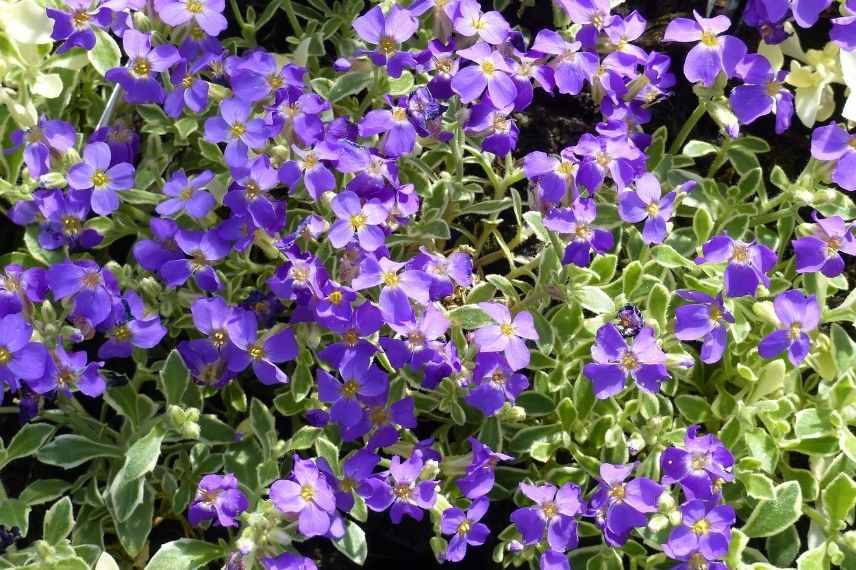
Aubrieta ‘Dr Mules Variegated’
Groundcover Sedums (Sedum)
Groundcover Sedums (stonecrops) offer many low, mat-forming varieties that brighten walls with vivid colours. Their small foliage, often evergreen in creeping varieties, is thick and fleshy, making them highly drought-tolerant and suited to hot, sunny exposures. In addition to various greens, foliage comes in many colours, including silver (Sedum ‘Cape Blanco’), red (Sedum ‘Wildfire’), or variegated (Sedum ‘Variegatum’). Flowering, which extends from spring to summer, is equally sparkling, creating colourful displays of yellow, white, red or raspberry that delight pollinators. Easy to grow and hardy, Sedums tolerate poor, dry, even calcareous soil. Very happy in sun, they withstand wind and sea spray.
- We offer a wide choice of Sedums, from taller to the most mat-forming.
- How to grow, to maintain and to propagate Sedums? All our tips in this guide.
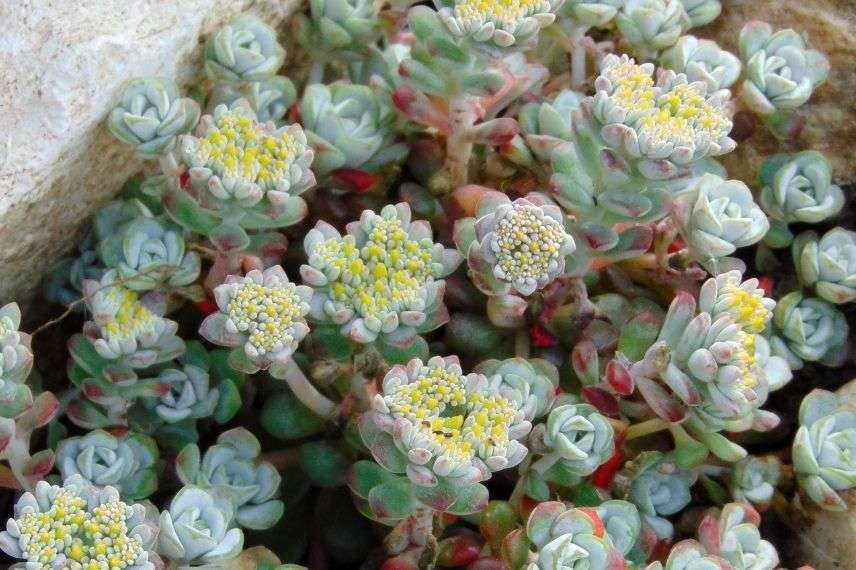
Sedum spathulifolium ‘Cape Blanco’
Artemisia ‘Nana’ (Artemisia schmidtiana ‘Nana’)
Artemisia is a perennial prized for decorative, aromatic foliage. Artemisia ‘Nana’ is, as name suggests, a dwarf variety, easy to tuck into a wall. It rarely exceeds 15 cm in height, and its fine, dissected, downy foliage forms a silver ball all year, showcasing neighbours. In summer, plant is clothed in small pale yellow flowers, enhancing ornamental effect. In sun, Artemisia maintains a more compact habit and stronger hues. It copes with poor soil, preferring calcareous tendencies but accepting more neutral substrates.
- Discover our wide selection of Artemisias!
- Everything to know to plant, to grow and to care for Artemisia.
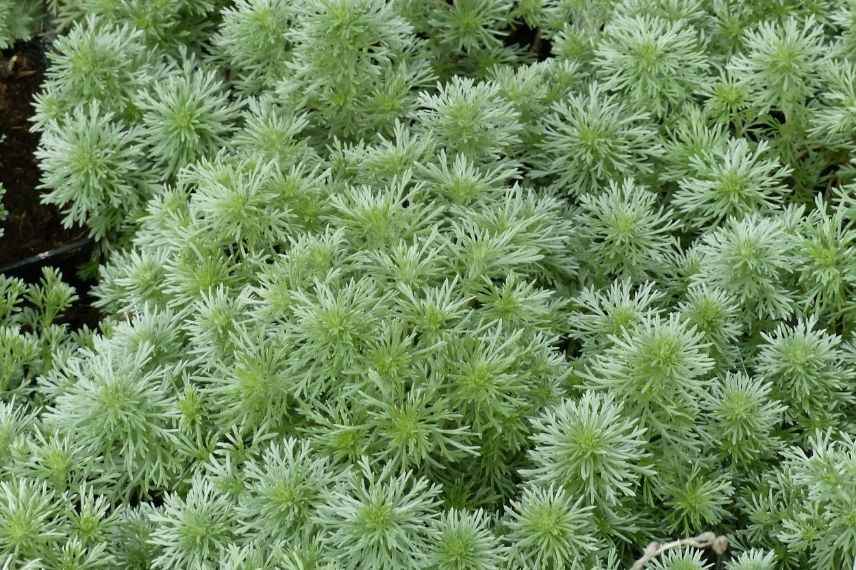
Artemisia schmidtiana ‘Nana’
Companion plants for sunny combinations
All plants listed above can be combined to create beautiful colourful displays in your wall. To enrich palette, you can also pair them with other perennials that enjoy same conditions, such as Alchemilla alpina, Arabis, Sea thrift, Delosperma cooperi, moss phlox, red valerian, cushion gypsophila, candytuft or alpine asters and houseleeks.
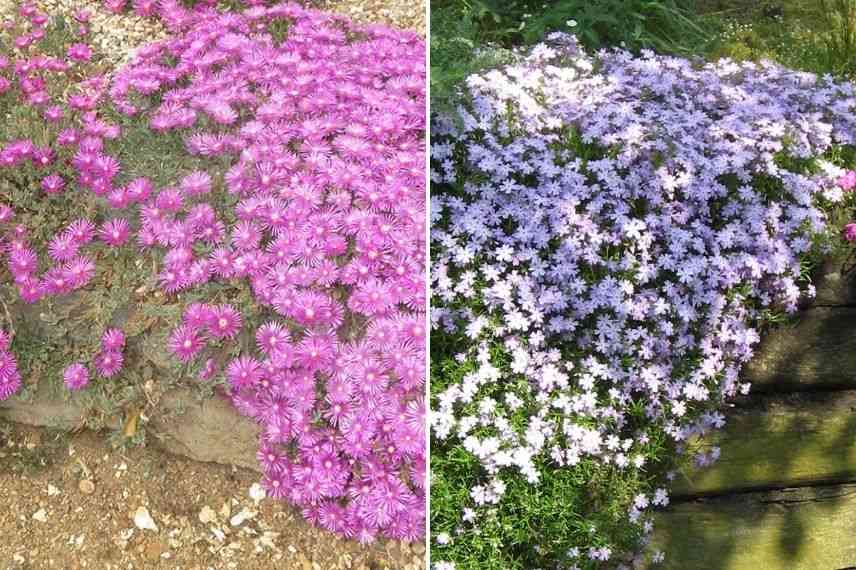
Delosperma cooperi (Photo David Short) and Phlox subulata ‘Emerald Cushion Blue’ (Photo Wikimedia)
Read also
10 plants to create a shady rockeryPerennials for low walls in shade or partial shade
Ruine de Rome (Cymbalaria muralis)
Ruine de Rome (Cymbalaria muralis) is a small, unassuming perennial but highly decorative. Its glossy green foliage, evergreen, is covered from spring to late summer with small mauve flowers with a yellow centre. About ten centimetres high, it caresses old walls while lending them a discreet, gently antiquated charm, full of natural grace. With a rapid growth rate, Ruine de Rome readily colonises available crevices, while remaining easy to manage. This hardy perennial prefers part shade in a rather cool soil, but once established it can withstand drought. Calcareous soil does not hinder its development.
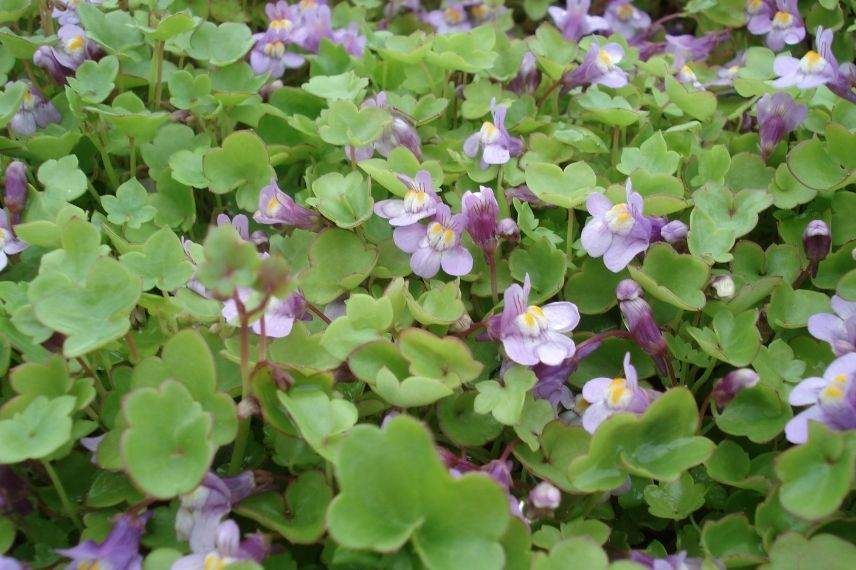
Cymbalaria muralis
Wall bellflower (Campanula portenschlagiana)
Its name leaves no doubt about its use between stones. The Wall bellflower, botanically known as Campanula portenschlagiana or Campanula muralis, is a charming perennial for locations with dappled light or shade. Its foliage is evergreen to semi-evergreen depending on winter severity. It is hidden beneath a mass of intense violet-blue flowers from spring until early summer, with the plant sometimes producing a further flush of flowers around September. This very floriferous groundcover is robust, easy to grow and undemanding, which has made it a garden favourite. Very hardy, this campanula dislikes climates that are too hot and dry, preferring light soils that stay cool yet well drained. Campanula poscharskyana ‘E.H. Frost’, a close relative, produces pure white flowers that brighten darker areas.
- All our Campanula species and varieties in our online nursery.
- How to plant, cultivate and maintain Campanulas.
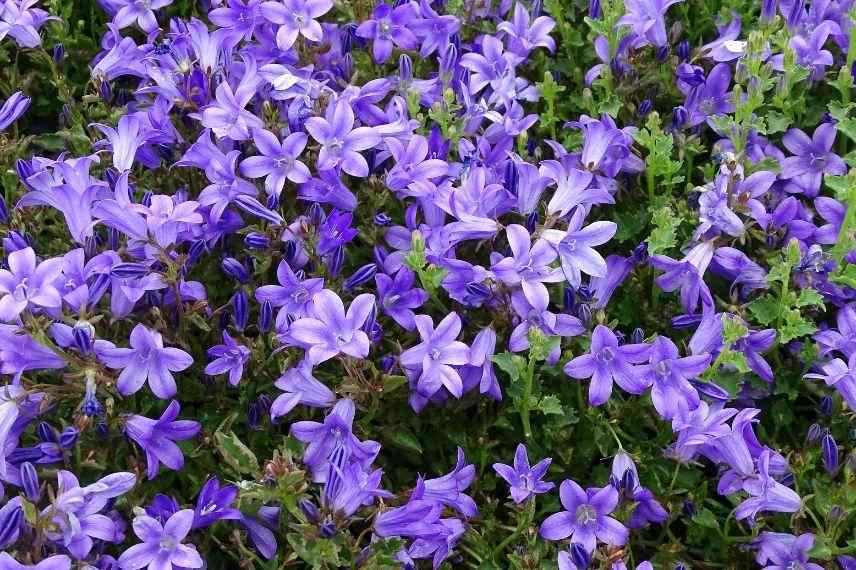
Campanula portenschlagiana
Bugle (Ajuga reptans)
The Bugle (Ajuga) is a spreading groundcover perennial that extends rapidly via stolons. Eventually the plant can reach a 50 to 60 cm spread. Planted on a wall it adopts a semi-trailing habit that looks very attractive. The glossy foliage is evergreen. It can be green, or display more unusual colours: chocolate brown (‘Black Scallop’), cream-variegated (‘Golden Glow’), white-variegated (‘Frosted Jane’), pink (‘Princess Nadia’) or a mix of tones (‘Multicolor’). Flowering, which lasts from mid-spring to late summer, is mostly blue, though some varieties bear pink spikes (‘Purple Torch’) or white ones (‘Alba’). Very hardy, Ajuga primarily dislikes summer drought and arid situations. In part shade or shade, in a humid climate, it will perform best, particularly in soil that remains cool. Cold is not an issue and it can tolerate down to −20°C in drained soil over winter.
- Discover our range of Bugles in the nursery.
- All our tips for how to plant, grow and maintain Ajuga.
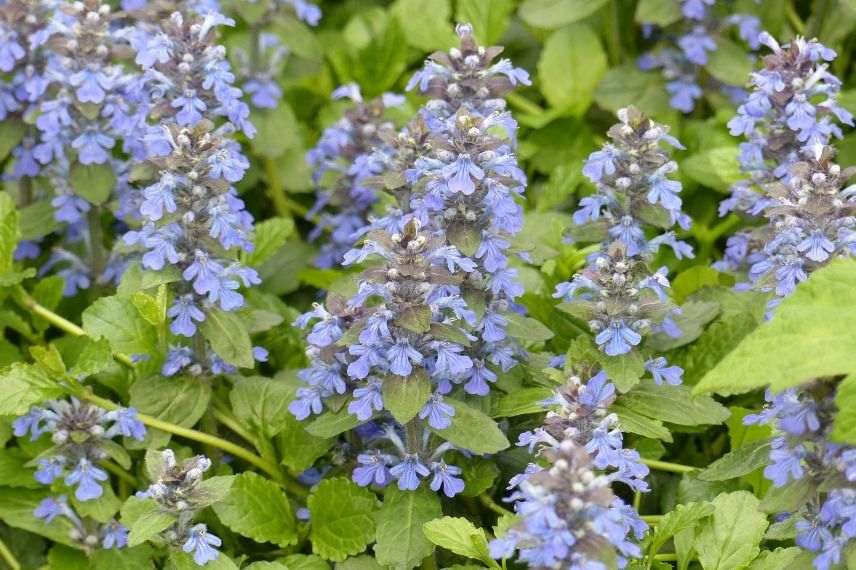
Ajuga reptans
Irish moss (Sagina subulata)
The Sagina is a mat-forming perennial with dark green evergreen foliage (Sagina subulata) or golden (Sagina ‘Aurea’). With a relatively slow growth rate, it forms a low cushion (3 to 5 cm) with a wide spread (25 cm) that can be mistaken for moss. In late spring, tiny white flowers appear across this dense carpet, adding extra brightness. Quite hardy (−15°C), this perennial is ideal between stones in part shade or deeper shade, as it mainly dislikes intense heat. In neutral or acidic soil, provided it stays cool during the season, it creates a soft-textured lawn.
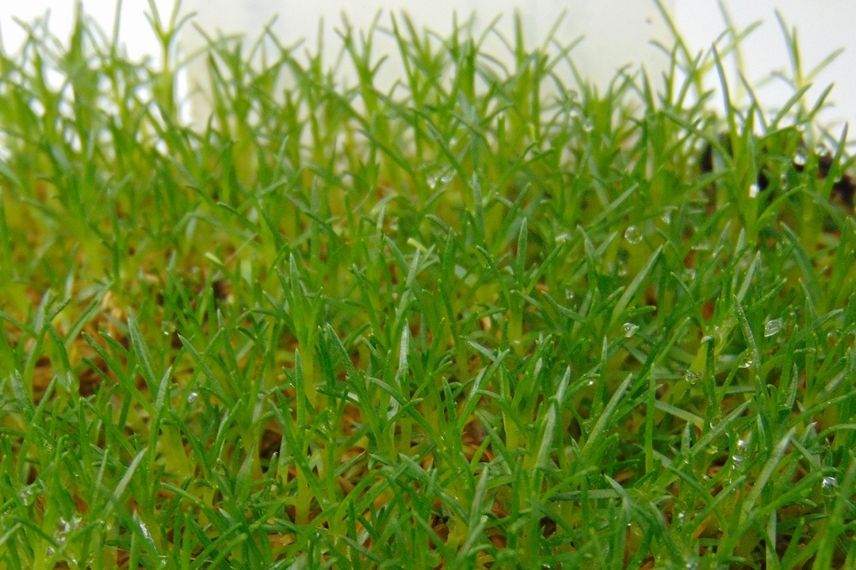
Sagina subulata
Rustyback fern (Asplenium ceterach)
The Asplenium ceterach, or Rustyback fern, is a delightful small fern with evergreen foliage. Although it does not flower, its bright green then darker, finely divided fronds are undeniably ornamental and complement the corollas of neighbouring plants. This evergreen fern is often found in shaded wall crevices because it establishes on very little soil, and it self-seeds naturally, particularly between limestone rocks. Its narrow foliage forms dense rosettes, creating a spreading tuft about fifteen centimetres high and roughly twice as broad. With respectable hardiness (−10°C), it copes well with drought provided it is sheltered from scorching sun.

Asplenium ceterach
Companion plants for shady mixes
Other perennials can adorn a wall that receives little sun, accompanying the plants in this selection. Examples include the Small bellflower, saxifrages (such as Saxifraga ‘Cheap Connection’, Saxifraga ‘Clarence Elliott’ or Saxifraga x urbium), Leptinella, Corsican mint, Golden potentilla, other ferns (such as the Lady fern ‘Frizelliae’ or Blechnum penna-marina) or Creeping Jenny ‘Goldilocks’.
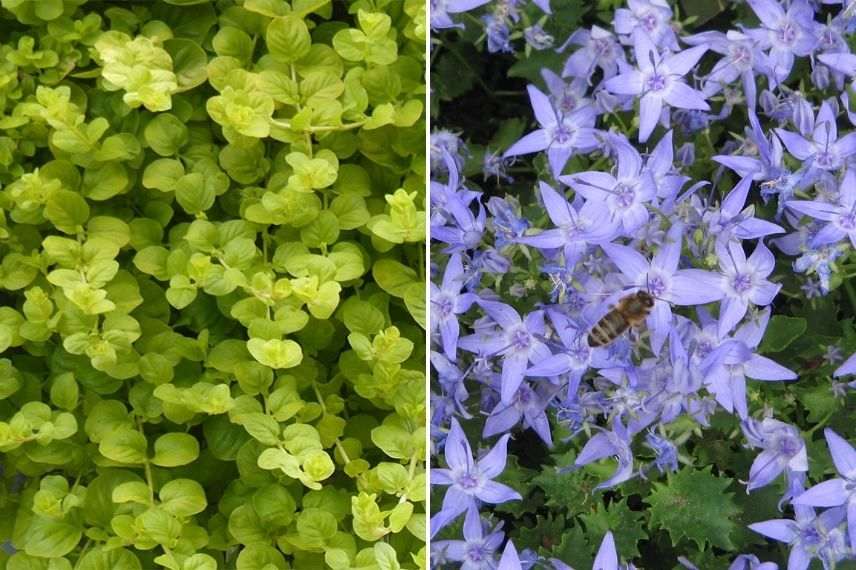
Creeping Jenny ‘Goldilocks’ and Small bellflower (Photo Wikimedia)
Discover other Perennials
View all →Available in 1 sizes
Available in 0 sizes
Available in 1 sizes
Available in 1 sizes
Available in 2 sizes
Available in 1 sizes
Available in 1 sizes
Available in 1 sizes
Available in 1 sizes
Available in 1 sizes
- Subscribe!
- Contents
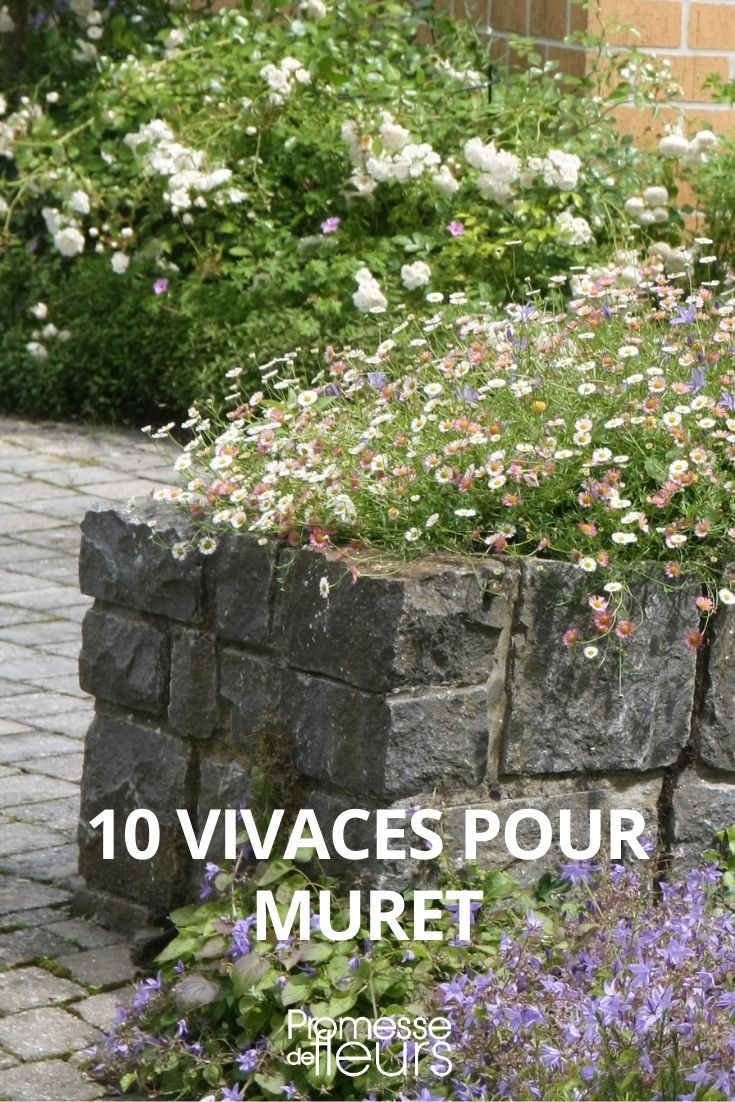































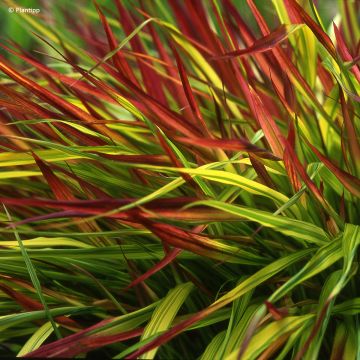
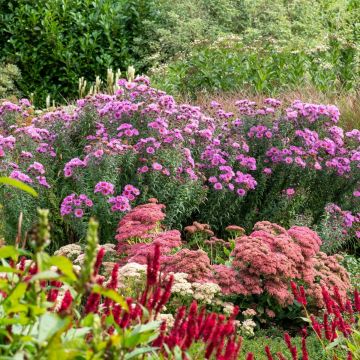
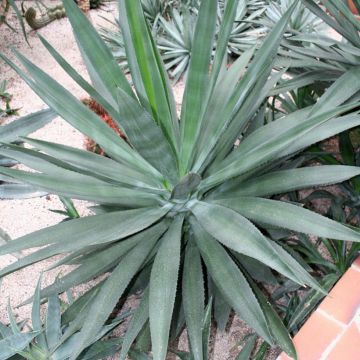
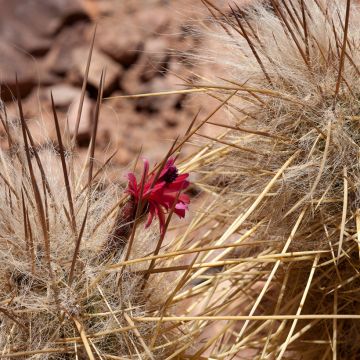
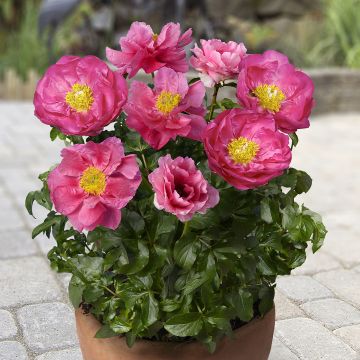
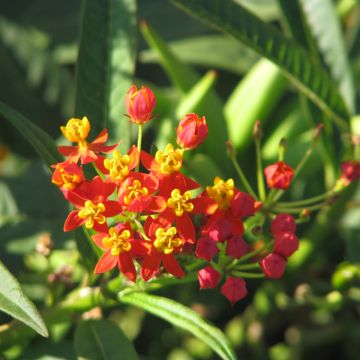
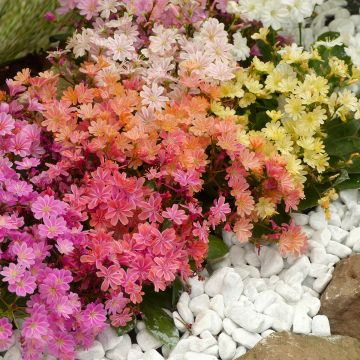
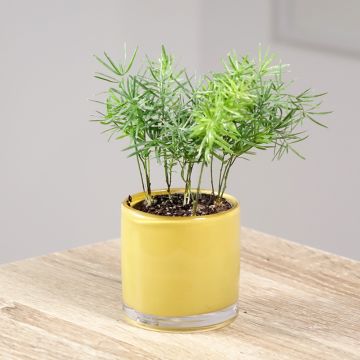
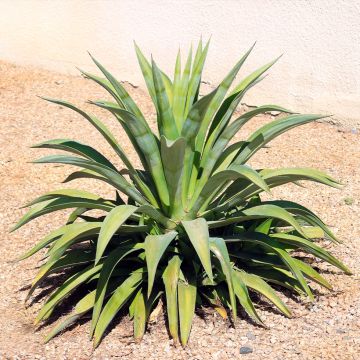
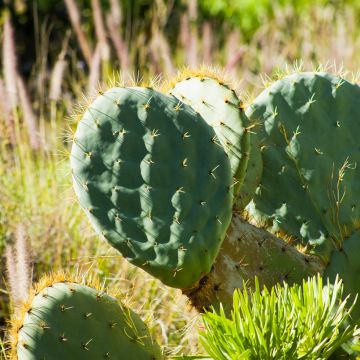
Comments